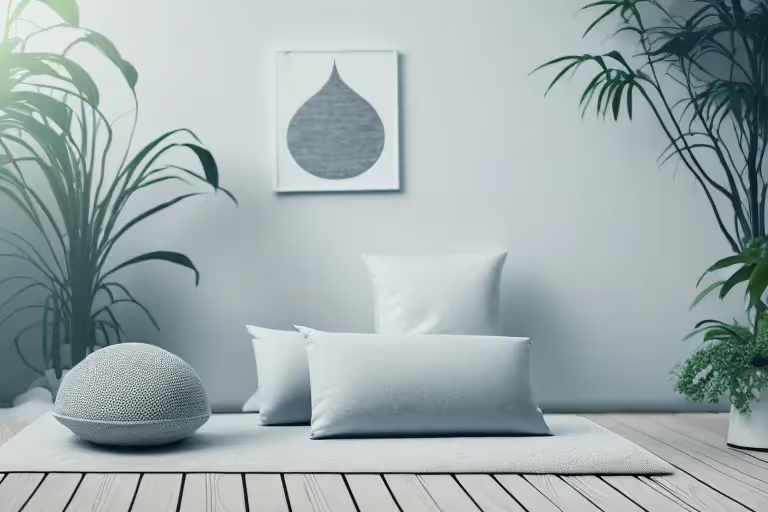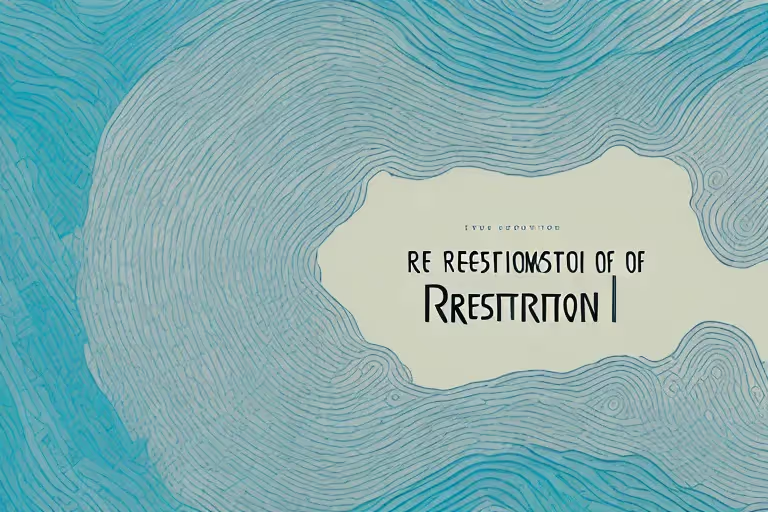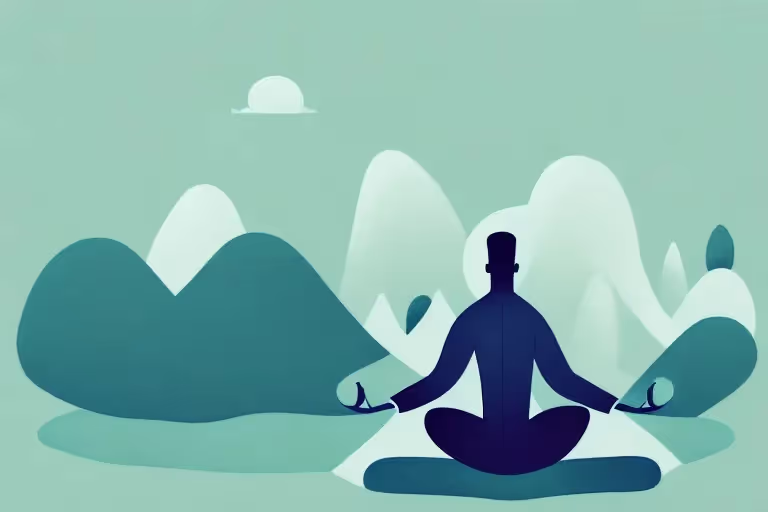Meditation is a prismatic journey - serene and powerful, that directs you towards peace, harmony and internal growth. However, many people, especially beginners, struggle with one critical aspect: how to sit during meditation. This comprehensive guide will elucidate this path, demystifying the key elements concerning the correct sitting positions and their importance during meditation.
Understanding the Importance of Proper Sitting in Meditation
The connection between the body and mind is profound. To move along the path of transcendent awareness, understanding the importance of the right sitting position is vital. It forms the backbone of your meditation practice.
When it comes to meditation, the sitting position you choose can greatly influence the quality of your practice. It is not just about finding a comfortable spot to sit, but also about aligning your body in a way that supports your mental focus and overall well-being.
The Connection Between Posture and Focus
An upright and comfortable posture during meditation holds substantial importance. It creates the necessary condition for the mind to settle and become still. Through healthy posture, you unlock an unobstructed flow of energy, which enhances concentration and spawns deeper states of calmness.
Imagine yourself sitting cross-legged on a cushion, with your spine straight and your head aligned with your neck and shoulders. This posture allows the energy to flow freely through your body, enabling you to maintain a sense of alertness and attentiveness throughout your meditation practice. It also helps you stay focused on the present moment, as any discomfort or tension in your body can easily distract your mind.
Aura has the world’s largest and best collection of Meditations and hundreds of Coaches to choose from.
Try it Free!
Health Benefits of Correct Sitting Positions
Additionally, employing the right sitting position provides numerous health benefits. It impacts the physiological processes, aiding in improved circulation, deeper breathing, and better function of the internal organs. More importantly, it can help prevent problems associated with long sitting sessions, such as back pain or discomfort.
When you sit with a straight spine, you allow your lungs to expand fully, allowing for deeper and more efficient breathing. This increased oxygen intake not only energizes your body but also helps to clear your mind, making it easier to enter a meditative state. The improved circulation that comes with proper sitting posture also benefits your overall well-being, as it ensures that oxygen and nutrients are delivered to all parts of your body.
Furthermore, maintaining a correct sitting position during meditation can help alleviate back pain and discomfort. By keeping your spine aligned and supported, you reduce the strain on your back muscles and promote a healthy posture. This can be particularly beneficial for those who spend long hours sitting at a desk or engaging in sedentary activities.
Remember, the benefits of proper sitting in meditation extend beyond the cushion. The awareness and mindfulness you cultivate during your practice can spill over into your daily life, helping you maintain a sense of balance and calmness even in the midst of challenges.
Preparing for Meditation
Before you delve into meditation, carving a conducive environment significantly impacts your practice. Here’s how you should prepare:
Choosing the Right Environment
Find a quiet and peaceful environment where you won’t be disturbed. This space doesn't need to be large or special, but it should be dedicated solely to your meditation practice. The consistency and tranquility of a chosen space can improve the quality and depth of your meditation.
Imagine a serene room with soft, diffused lighting. A gentle aroma of incense fills the air, creating a soothing atmosphere. The walls are adorned with beautiful artwork and symbols that inspire a sense of peace and tranquility. The room is free from clutter, allowing your mind to focus solely on your meditation practice.
As you enter this sacred space, you feel a sense of calmness wash over you. The energy in the room is palpable, inviting you to let go of the outside world and journey inward.
Wearing Comfortable Clothing
Comfortable clothing is another essential element. Loose, breathable clothes will allow energy to flow freely within your body, anchoring your focus inward, and further facilitating the emergence of a serene mental state.
Imagine yourself wearing loose-fitting pants made from soft, natural fibers. The fabric gently caresses your skin, allowing for unrestricted movement. Your top is comfortable and lightweight, allowing your body to breathe effortlessly. As you settle into your meditation posture, you feel a sense of ease and relaxation in your attire.
The clothes you wear during meditation are not just functional but also symbolic. They represent your commitment to creating a sacred space within yourself, where you can connect with your innermost being.
Setting a Meditation Schedule
Establishing a consistent meditation schedule reinforces a disciplined and routine practice. Whether it’s early morning or late at night, find a time when you can be free of responsibilities and interruptions. The regularity helps build a rhythmic cycle, augmenting your meditation experience.
Imagine waking up before dawn, as the world is still enveloped in darkness. The air is crisp and cool, and a sense of stillness pervades the atmosphere. You find your way to your designated meditation spot and settle into a comfortable position.
As the first rays of sunlight peek over the horizon, you begin your meditation practice. The gentle sound of birds chirping in the distance becomes a backdrop to your inner journey. The world around you slowly awakens, but you remain undisturbed, anchored in your meditation practice.
By setting a meditation schedule, you create a sacred space in time. It becomes a sanctuary where you can retreat from the demands of daily life and reconnect with your inner self. Each time you honor this schedule, you strengthen your commitment to personal growth and self-discovery.
Exploring Different Sitting Positions
In meditation, several sitting positions can be employed, each one offering unique benefits. Here are some you can explore:
The Full Lotus Position
Fully engaging, the Full Lotus position requires flexibility. This cross-legged posture, in which each foot lies on the opposite thigh, fosters physical stability and aids the flow of energy. However, this position is not suitable for everyone, especially for those with knee or hip issues.
When practicing the Full Lotus position, it's important to find a comfortable balance between stability and ease. The positioning of the legs helps to create a solid foundation, grounding the body and allowing for a deep sense of stability. This position also encourages proper alignment of the spine, which promotes a clear and focused mind during meditation.
While the Full Lotus position may initially feel challenging for beginners, with consistent practice and gradual stretching, it can become a deeply rewarding and comfortable posture. It is said to create a sense of harmony within the body, mind, and spirit, allowing for a profound meditation experience.
The Half Lotus Position
The Half Lotus position is a comfortable alternative. One foot is placed on the opposite thigh, while the other rests under the knee of the upper leg. This creates a stable yet less intensive posture, making it ideal for longer meditation sessions.
Practicing the Half Lotus position provides a balance between stability and flexibility. The foot that is placed on the opposite thigh helps to anchor the body, while the other foot provides support and comfort. This position allows for a relaxed and open posture, which encourages deep breathing and a sense of spaciousness.
Many meditators find the Half Lotus position to be a great choice for extended periods of meditation. It offers a good compromise between the physical demands of the Full Lotus position and the ease of other sitting positions. With regular practice, the Half Lotus position can become a natural and comfortable posture for meditation.
The Seiza Position
The Seiza position requires you to kneel with your buttocks resting on your heels. It maintains an upright spine and can be bolstered with a cushion for extra comfort. It's a perfect match for those with less flexibility.
When practicing the Seiza position, it's important to ensure proper alignment of the spine and a relaxed yet alert posture. This position allows for a straight back, which promotes deep breathing and a sense of stability. The use of a cushion or meditation bench can provide additional support and comfort, especially for those with limited flexibility or discomfort in the knees or ankles.
The Seiza position is widely used in Zen meditation and is known for its simplicity and accessibility. It allows for a grounded and stable posture, enabling the meditator to cultivate a focused and calm state of mind. With regular practice, the Seiza position can become a comfortable and natural choice for meditation.
The Chair Position
If floor positions are uncomfortable, the Chair Position is a suitable alternative. While maintaining an upright spine, feet planted firmly on the ground, the comfort and accessibility of this position make it popular with many meditators.
When practicing meditation in a chair, it's important to choose a chair that provides proper support and allows for an upright posture. The feet should be flat on the ground, and the back should be straight but relaxed. This position allows for a sense of stability and ease, making it ideal for those who may have difficulty with floor positions or physical limitations.
The Chair Position offers the advantage of being accessible to people of all ages and physical abilities. It allows for a comfortable and relaxed meditation experience, without the need for extensive flexibility or endurance. Many meditators find this position to be a practical and enjoyable way to cultivate mindfulness and inner peace.
Step-by-Step Guide to Sitting for Meditation
Now, let's enfold the essence of meditative sitting step by step:
Positioning Your Body
Start by choosing your preferred sitting posture. Regardless of what you choose, ensure that your body, especially your back, is comfortable and upright. It serves as the foundation, helping you stay alert yet relaxed during meditation.
Aligning Your Spine
Next, focus on aligning your spine. Imagine a string pulling your head upwards towards the sky, letting the rest of your body hang freely. This alignment helps maintain energy flow, keeping you alert and focused.
Positioning Your Hands
Your hands can rest gently on your knees or in your lap in whichever way lets energy circulate through your body almost effortlessly.
Focusing Your Gaze
Lastly, have a soft focus with your eyes partially closed or calmly on a single point in your surrounding environment. This point of focus can act as an anchor, binding your concentration throughout the meditation session.
In closing, remember that the best meditation posture is the one that offers you both, an upright position and ease. Most importantly, be gentle with yourself. The goal is mindful awareness, not a perfect pose. To simplify your meditation journey even further, consider using the Aura Health app. It provides myriad guided meditations, life coaching sessions, and mood tracking that can help fine-tune your practice and enhance its overall rewards.
Aura is Your All In One App for Meditation, Mindfulness Wellbeing
Find peace every day with one app for your whole well-being. There is no one-size-fits-all solution to mental well-being. Aura is the first all-in-one wellness app that learns how to best help you. Discover an endless library of expert-created tracks for your well-being, all taught by the world’s best coaches, therapists, and storytellers. With Aura's personalized recommendations, you can find peace every morning, day and night.
Aura has the world’s largest and best collection of Meditations and hundreds of Coaches to choose from.



.webp)






.avif)

%20(1).avif)


.avif)
.avif)
.webp)


.avif)


















































































































.avif)

















.svg)









